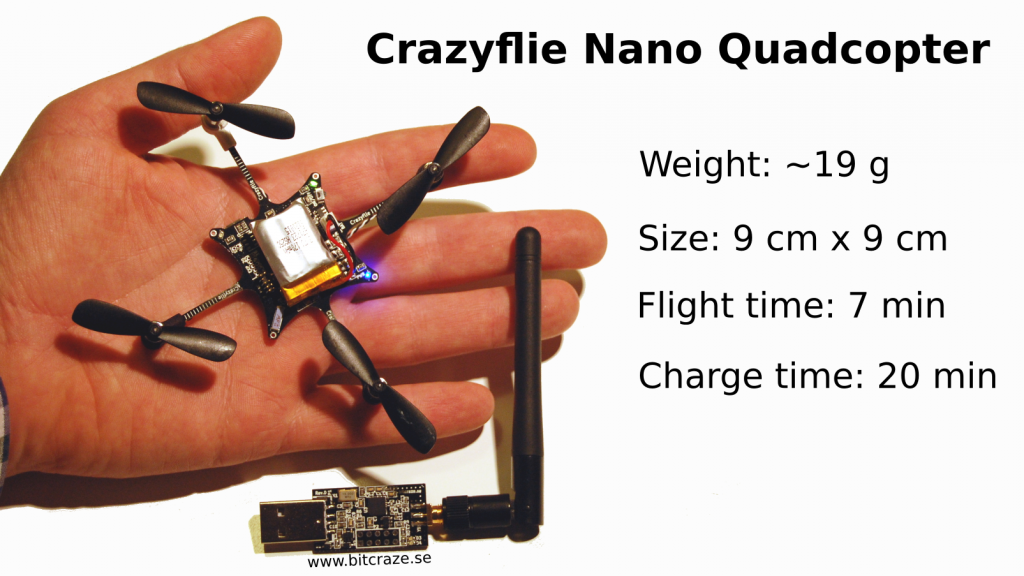Hi, Monday again. We just passed the two most exiting weeks in Bitcraze history. As we speak we are passing the 1K Crazyflie sold which is about 5 times over our optimistic estimations. Now the pressure is on, and there is still one week of pre-order left :-).
We are continuing to update the documentation, working on Crazyflie firmware, the PC gui client and as well all emails/administrative work that takes a surprising amount of time :-). Due to popular interest the focus has been on getting the client to work on Mac OSX and getting Crazyflie to work in a standalone mode (ie. no PC) with an E-sky R/C transmitter which is compatible with our radio chip. The transmitter is almost working (still some mapping issues to work out) and the OSX proof-of-concept is on the way to work (it should work out of the box if all the python libs where 64bits).
We should probably clarify that the PS3 controller we use to control the Crazyflie is just one possible input method. Actually any input device could be used which could be translated into roll, pitch, yaw and thrust. The GUI also simplifies it as there is a configuration dialog and soon we might have our first contribution which is for the xbox controller :-)
We are continually updating the wiki and are starting to get some activity on the forum. It is the right place to go if you have questions or want to discuss about the Crazyflie.
Thanks again for supporting us, one more crazy pre-order week to go!
